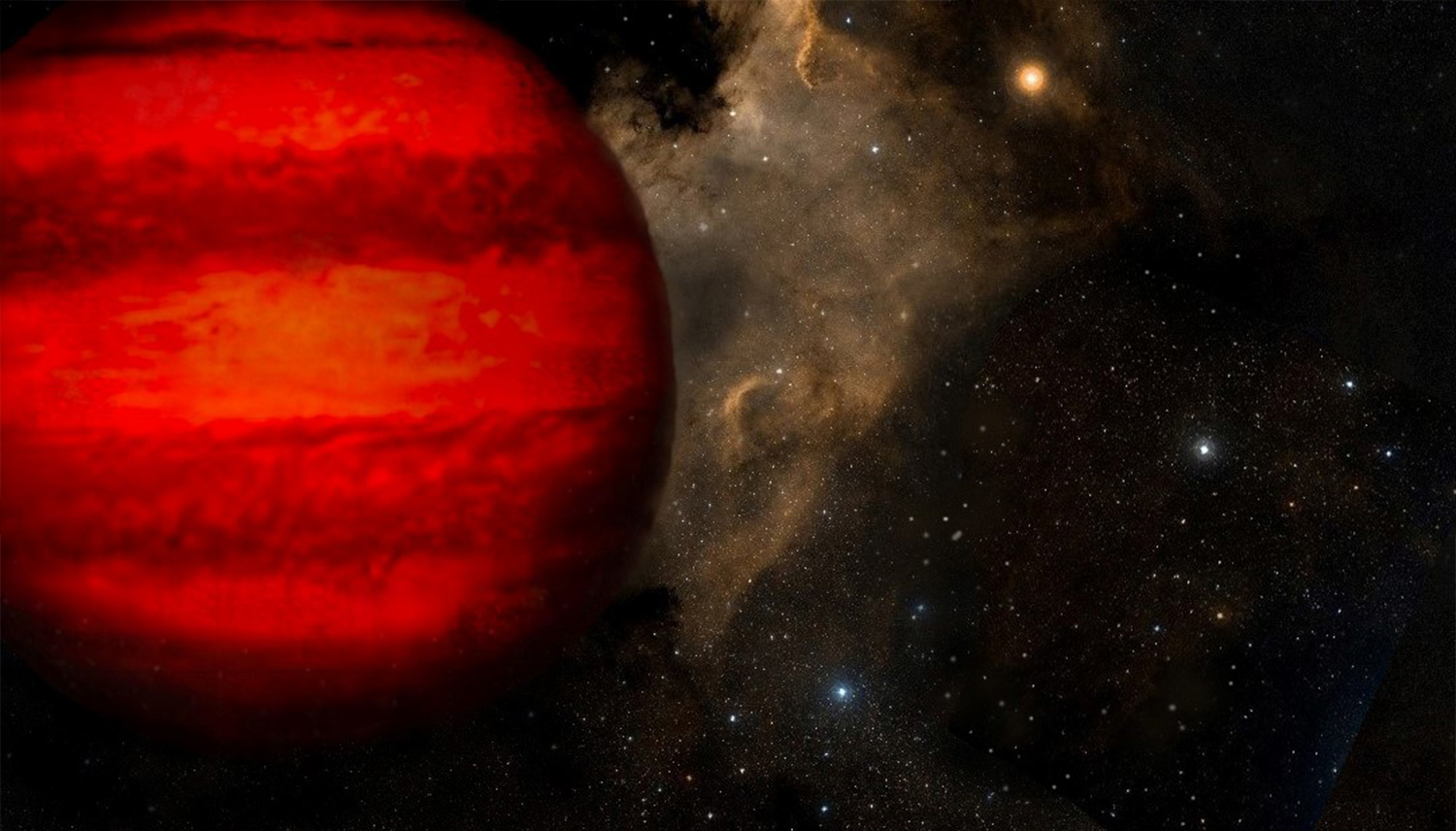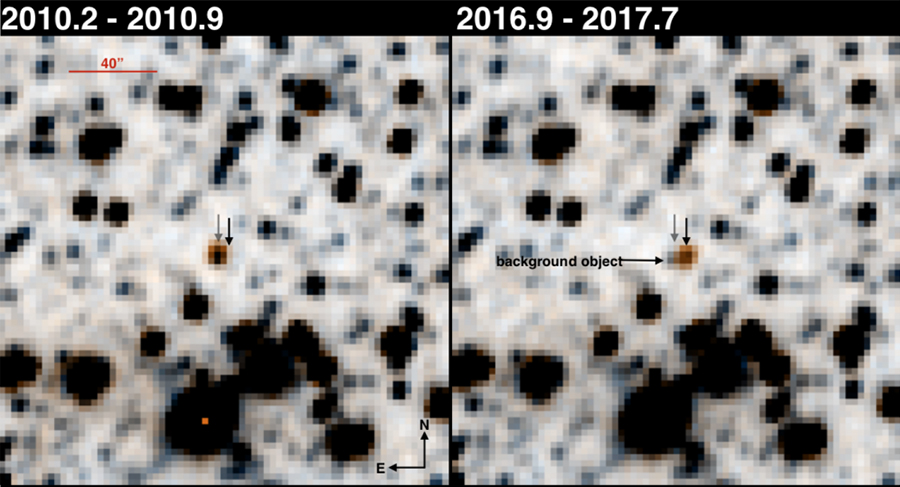Band of Astronomers Finds Low Heavy Metal in Brown Dwarf Discoveries
Published Date
By:
- Cynthia Dillon
Share This:
Article Content

Illustration of a brown dwarf. Despite their name, brown dwarfs would appear magenta or orange-red to the human eye if seen close up. Image courtesy of William Pendrill
UC San Diego scientists have contributed to the discovery of two unusual brown dwarfs containing atypical amounts of heavy elements in their atmospheres. This unusual trait suggests that the celestial objects are part of a long-sought, ancient population of brown dwarfs formed early in the history of the Milky Way Galaxy.
Astronomers in the university’s Cool Star Lab, directed by Adam Burgasser, worked on this project with a larger team of scientists and citizen scientists led by Marc Kuchner, a NASA scientist and the principal investigator of the NASA-funded program Backyard Worlds: Planet 9. The lead author of the study, Adam Schneider from Arizona State University, refers to the new-found objects as the first “extreme T-type subdwarfs.”
Subdwarfs are the most ancient stars in the Milky Way Galaxy, formed before massive stars were able to produce the heavy elements that seeded later generations of stars.
“Subdwarfs populate the halo of our galaxy—a roughly spherical, extended distribution of stars formed either before the Milky Way had its current shape, or as old stars were flung out by close encounters with giant molecular clouds,” explained Burgasser. “Subdwarfs provide a window into the history of star formation and dynamics in our galaxy,” he said.
Brown dwarfs—stars of too little mass to fuse hydrogen in their cores—were first conceived of nearly 60 years ago and discovered just 25 years ago. A typical brown dwarf contains significantly more iron and other metals than these newly discovered subdwarfs. Scientists have long wondered if these tiny stars could have formed in the metal-poor environment of the young Milky Way. Until this discovery, this question remained ambiguous.
“Astronomers had discovered a few ‘modestly’ metal-poor brown dwarfs over the past decade, but we had not found brown dwarfs that were so metal-poor that they had to be part of the halo,” said Burgasser. “Now we have.”
According to Kuchner, a central question in the study of brown dwarfs and exoplanets (i.e., planets beyond our solar system), many of which have the same sizes and masses of brown dwarfs, is how much their formation depends on the presence of metals like iron and other elements formed by earlier generations of stars.
“The fact that these brown dwarfs seem to have formed with such low-metal abundances suggests that maybe we should be searching harder for ancient, metal-poor exoplanets, or exoplanets orbiting ancient metal-poor stars,” Kuchner said.

Sky images of the T subdwarf discovery WISEA J181006.18−101000.5 taken with WISE and NEOWISE in two epochs: mid-2010 and early 2017. The target is the orange source that moves slightly to the right between these epochs, a consequence of its high velocity and proximity to the Sun. Credit: Adam Schneider
The discoveries, named WISEA J041451.67−585456.7 and WISEA J181006.18−101000.5, were both identified by citizen scientists on the Backyard Worlds team in data obtained by the Wide-field Infrared Array Explorer (WISE) satellite telescope. The citizen scientists used a tool called WiseView which allows them to identify faint, nearby stars moving across the sky.
“WiseView scrolls through data like a short movie,” Schneider said, “so you can more easily see if something is moving or not.” The two discoveries were prioritized for follow-up because of their large motions and unusual colors.
The UC San Diego team obtained some of the follow-up observations with the W. M. Keck Observatory, located on the summit of Maunakea in Hawaii. The team also connected with San Diego Super Computer Center (SDSC) Director Mike Norman for time on the Extreme Science and Engineering Discovery Environment (XSEDE) Comet cluster. Graduate student Roman Gerasimov was able to learn the system and port the code to run on the team’s servers, allowing for the investigation of novel questions that couldn't be addressed with pre-calculated models available in the literature. Gerasimov also computed a novel set of low-temperature, metal-poor atmosphere models to analyze the observations and determine the temperature and composition of the objects.
“The computations needed to generate these models are particularly complex because of the molecular chemistry and opacities present in brown dwarf atmospheres,” explained the graduate student. “XSEDE was critical to this analysis.”
With these models, the scientists were able to conclude that their discoveries were indeed cold brown dwarfs, with atmospheres that contained as much as 30 times less iron and other metals than known brown dwarfs.
The findings, which will be published in the Astrophysical Journal but are accessible online, highlight the opportunity for anyone to get involved in scientific discovery. All of the citizen scientists who identified these two subdwarfs are co-authors in the publication.
“The discovery of these two brown dwarfs shows that science enthusiasts can contribute to the scientific process,” Schneider said. “Through Backyard Worlds, thousands of people can work together to find unusual objects in the solar neighborhood.”
This work used the XSEDE Comet cluster at SDSC (program AST190045), which is supported by the National Science Foundation (grant no. ACI-1548562).
Share This:
Stay in the Know
Keep up with all the latest from UC San Diego. Subscribe to the newsletter today.



